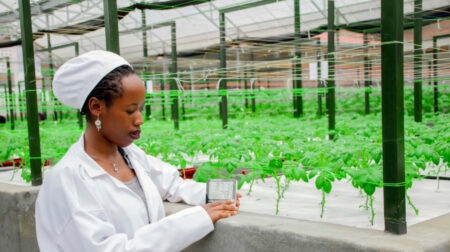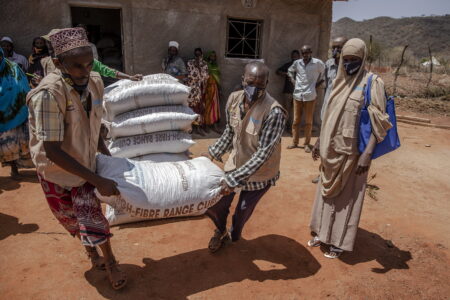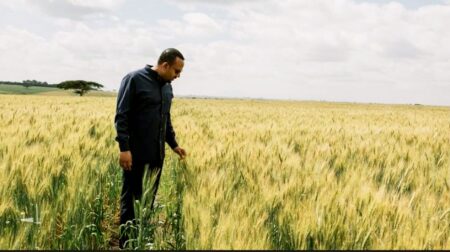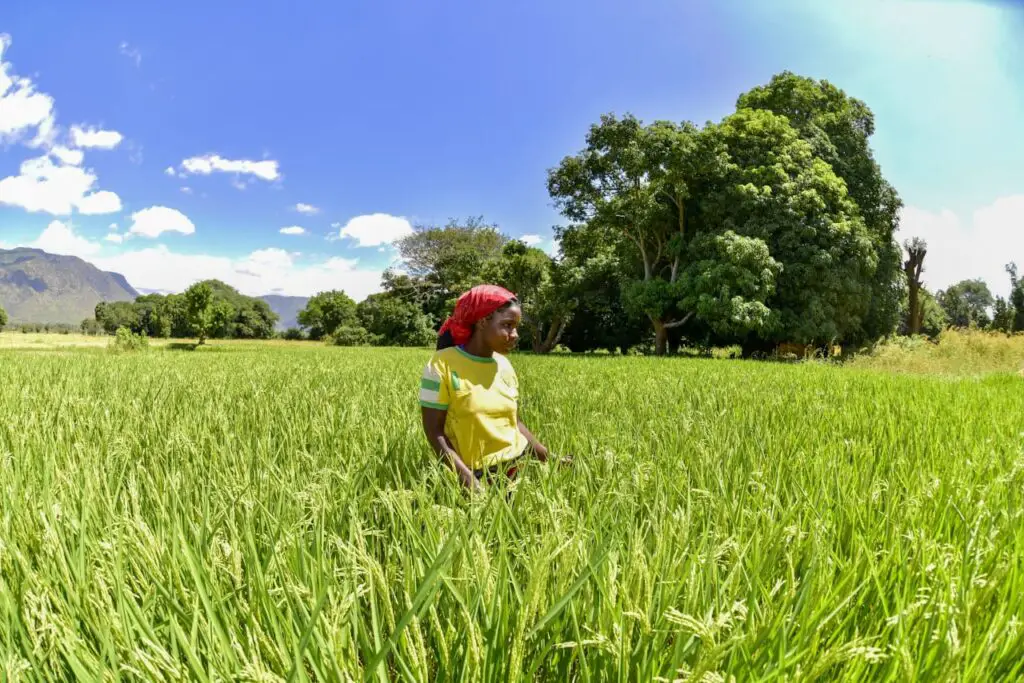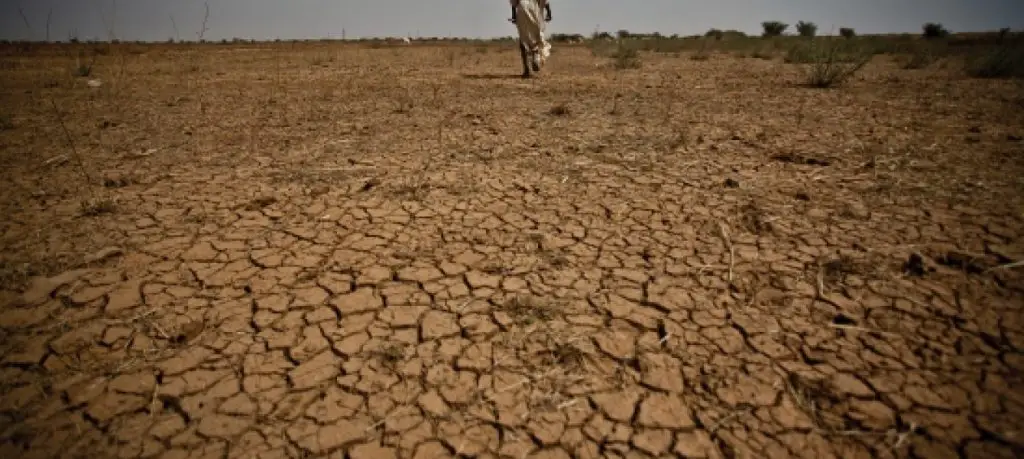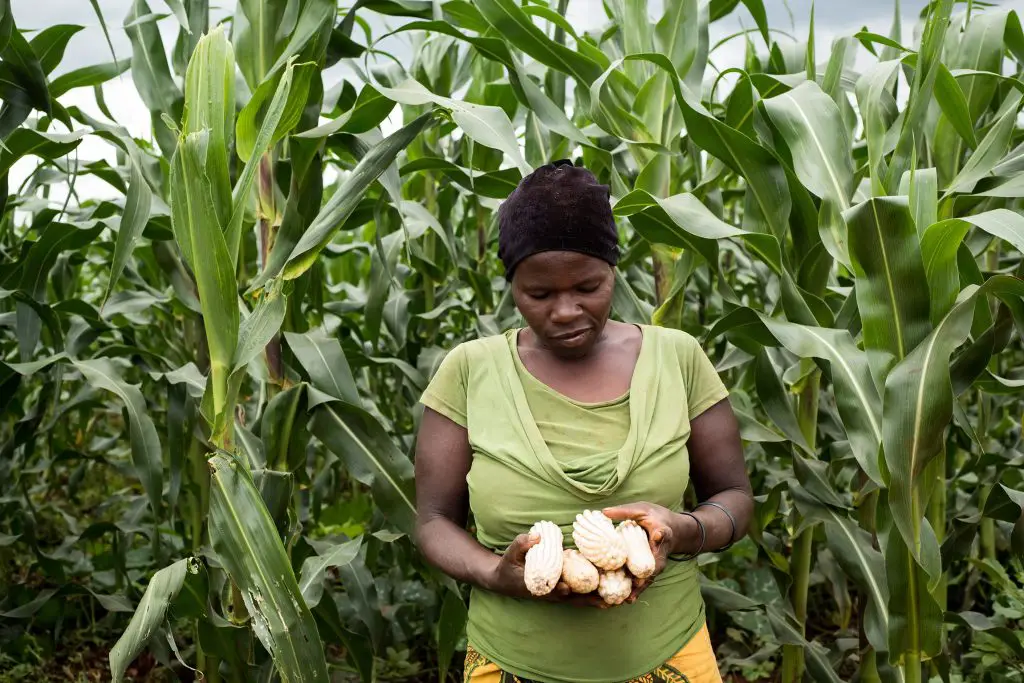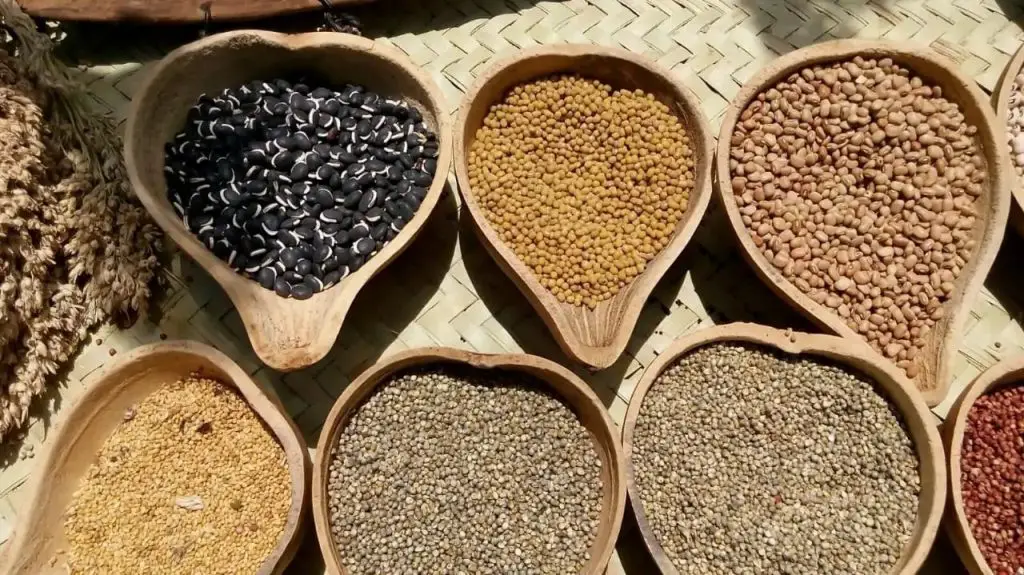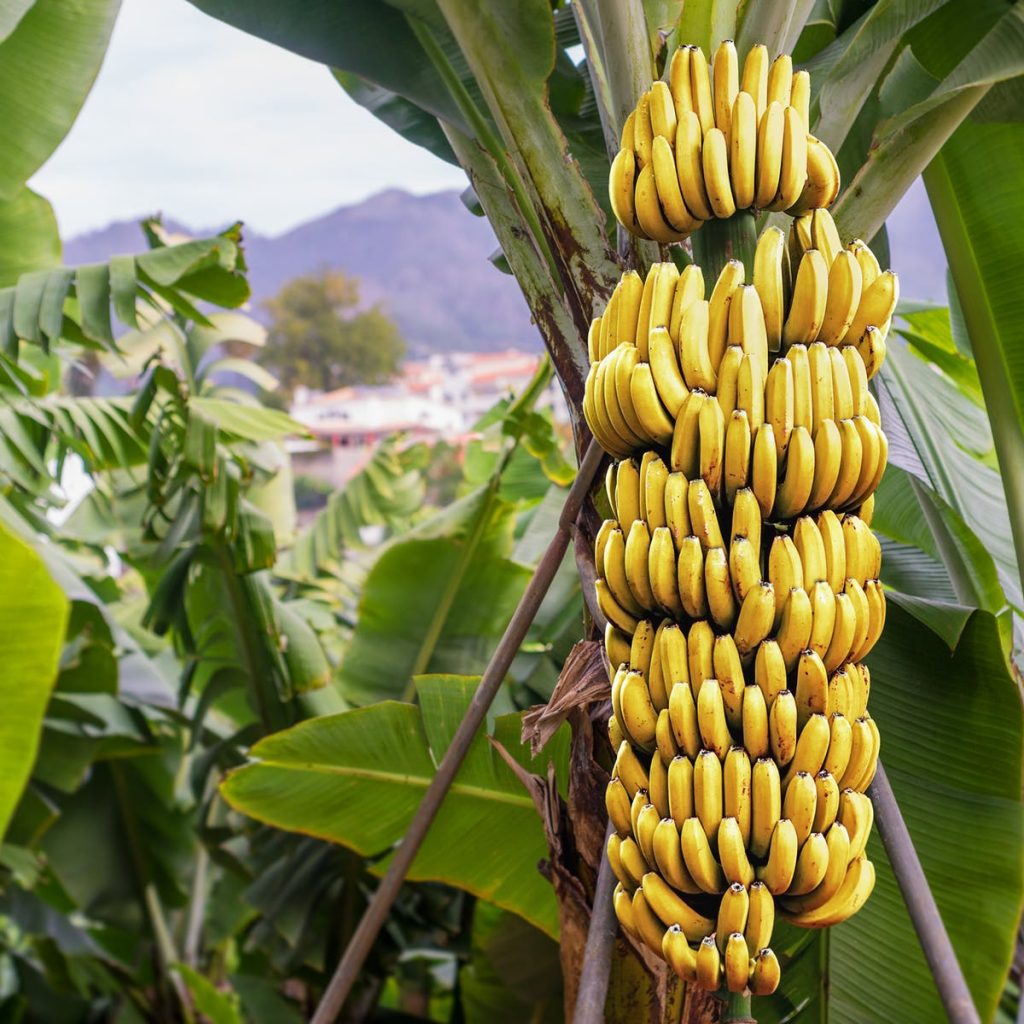- Africa’s new dawn: the rising role of digital and AI in agriculture
- Can Dangote Refinery Transform Africa Energy Ambition
- Gallup Survey: 80 per cent of Kenyan Workers Are Disengaged and Seek New Opportunities
- Madagascar Man Freed from 5KG Tumor After 15-Year Struggle
- How women in Africa are perceived and treated
- Sugar consumption in Kenya to Increase to 1.23 Million Tonnes
- Can Somalia and Turkey Oil deal Bring Change in Somaliland
- Remittances to Kenya dropped to $371.6 million in June, marking a six month low
Browsing: FAO
- Addressing the pressing issues of chronic hunger FAO’s blueprint is projected to impact 600 million people by 2030.
- According to FAO, the roadmap envisions transforming agrifood systems from a net emitter to a carbon sink.
- It calls for alternative production methods, adjusted consumption patterns, refined forestry management, and innovative technologies such as carbon capture.
The United Nation’s Food and Agriculture Organization (FAO) has initiated the process for the development of a groundbreaking global roadmap aimed at eliminating hunger and all forms of malnutrition without exceeding the 1.5°C threshold set by the Paris Agreement.
The United Nations’ Food and Agriculture Organization (FAO) has embarked on a pioneering initiative to craft a global roadmap that holds the ambitious goal of eradicating hunger and all manifestations of malnutrition while adhering to the 1.5°C threshold outlined in the Paris Agreement.
“FAO’s Global Roadmap for SDG2 and 1.5°C underscores the importance of climate financing …
- Eastern Africa and Western Africa account for 70 per cent of Africa’s population unable to afford a healthy diet.
- About 30 per cent of Africa’s children bear the indelible mark of stunted growth, a cruel consequence of malnutrition.
- Burkina Faso, Djibouti, Mali, Mauritania, and Niger emerged with the highest prevalence rates of child wasting above 10 per cent.
Food crisis in Africa is deepening with a new report showing that an estimated one billion people in the continent are unable to afford a healthy diet. Painting a grim picture for the continent, the Africa Regional Overview of Food Security and Nutrition – Statistics and Trends 2023 report adds that a total of 282 million people in Africa, roughly 20 percent of the population, including millions of children, are undernourished. This distressing statistic sadly reflects an increase of 57 million people since the onset of the COVID-19 pandemic.
“After a long …
- Fresh financing will bolster Ethiopia’s progress in achieving wheat self-sufficiency.
- Data shows Ethiopia’s wheat productivity has struggled to match the demands of a rising population, urbanization, and economic expansion over the past decade.
- Statistics show that Ethiopia’s annual wheat imports average roughly $600 million.
Ethiopia, the second-largest wheat producer in sub-Saharan Africa, has received a significant boost from the African Development Bank (AfDB) in the form of an $84.3 million grant aimed at propelling the nation’s wheat production to new heights.
The grant, a collaborative effort between the AfDB, the Government of the Netherlands, agribusiness firm OCP Africa, and the Global Center on Adaptation, holds the promise of not only enhancing wheat production but also bolstering exports.
CREW initiative in Ethiopia’s wheat production
As wheat gains prominence as a major crop cultivated across the vast expanse of African plains, Ethiopia strategically positions itself as a pivotal player in the sub-sector.…
- The FAO Food Price Index averaged at 127.2 points in April 2023, up 0.6 percent from March.
- According to FAO, the April rise reflected higher prices for sugar, meat, and rice.
- Price declines were, however, recorded for cereals, dairy, and vegetable oil price indices.
- FAO Chief Economist Maximo Torero terms the increase in rice prices “extremely worrisome”.
Global food prices edged up in April for the first time in the past year. The FAO Food Price Index, which tracks monthly price changes, averaged 127.2 points in April, up 0.6 percent from March.
The Index was 19.7 percent below its level in April 2022, but still 5.2 percent higher than in April 2021. “As economies recover from significant slowdowns, demand will increase, exerting upward pressure on food prices,” FAO Chief Economist Maximo Torero said.
April rise reflected higher prices for sugar, meat and rice, which offset declines in cereals, dairy …
Meanwhile, Africa is looking to take pre-emptive action to avert the inevitable food crisis.
The United States has pledged support to help the continent grow and distribute more food. The aid will come through the African Development Bank (AfDB). The Bank is looking to fund a significant increase in food production in an effort to ward off the food crisis wrought by the Russia-Ukraine war.
In May this year, the AfDB set up a US$1.5 billion African Emergency Food Production Facility. It was established with the aim of supporting some 20 million smallholder farmers produce more food and to do so more sustainably.…
The continent comes in last in terms of funding and green development mechanisms in the global carbon market, which increased by 164% to a record $851 billion last year.
The largest market for trading carbon credits is in Africa, but what are the responsibilities of the sellers and buyers? Munyazikwiye questioned.
According to Mohamed Adow, the founder of the climate think tank Power Shift Africa, “Rich countries do not want to decarbonize their economies. It’s a sky trap. Rather than cutting emissions, they pay poor countries to run projects that lower emissions and take credit for that. Africa doesn’t have emissions to cut, but emissions to avoid.”
Adow urged all African leaders to take the helm of climate talks in their nations because “you need to choose the appropriate climate path if you’re the least developed and confront the highest climate vulnerabilities.”…
Tanzania is building irrigation schemes for rice production and encourages efficient use of fertilizers via its 10-year National Rice Development Strategy Phase II (NRDS-II). “The NRDS-II purpose is to double the area under rice cultivation from 1.1 to 2.2 million hectares from 2018 to 2030, double on-farm rice productivity from two t/ha to four t/ha by 2030, and reduce post-harvest loss from 30 per cent to 10 per cent by 2030,” according to ITA.
The exportation of goods is a numbers game. Numbers give a unique perspective on the trend of agro-product exportation across potential and competitive markets in the region and abroad.
ITA shows that the exportation of corn has faced setbacks in the financial year 2021/2022 as forecasted to decrease by 20 per cent, equivalent to 80 million metric tonnes, due to the COVID-19 pandemic disrupting supply chains. The decrease is attributed to reports of truck drivers’ screenings, …
Only a few Kenyans are aware of the entire extent of the law’s punitive nature, which has remained hidden from the public. The farming communities in Kenya who are aware of it are shocked that no public engagement was carried out prior to the adoption of this statute.
Greenpeace Africa’s Campaigner, Claire Nasike, says that the Kenya government has failed to do what it was supposed to do, which was to make laws to protect the ownership of native seeds, knowledge about these seeds and the intellectual property rights. The current laws on seeds support neo-colonialism and could make it easy for multinationals, big businesses, and other profit-driven organisations to steal local resources.
Kenya’s 2010 Constitution has made it clear that indigenous seeds, which are also called “informal seeds”, exist and need to be protected. This is done by requiring parliament to pass laws that protect the ownership of indigenous …
- Agriculture is contributes 23 percent of African GDP, Mckinsey 2019
- At least 43.8 percent of people are employed in the agriculture sector
- Only 5-6 percent of arable land in Africa is irrigated
Agriculture in Africa has not only an economic value but a cultural significance. It is time to transform the economy and lives of African farmers. Africa is home to nearly 60 percent of the world’s arable land. Over the past decade, African agriculture has faced a number of shocks which beg for technological transformation. Farming in Africa contributes greatly to the welfare of most rural-based populations.
Despite the standing potential, productivity in Africa is lagging; hence, the role of modern technology stands to draw billions into it.Africa imports some food items abroad, such as wheat from war-entangled nations Ukraine and Russia, causing severe food insecurity issues for financially constrained nations such as Sudan.
Agriculture is not only the …
In 2015, the PLOS Pathogen journey noted that a fungus dubbed Tropical Race 4 had already decimated the crop in Southeast Asia over a number of decades.
According to the independent, the disease was first discovered in Australia, Jordan, Mozambique, Pakistan, the Middle East and Africa in 2013. It is so severe that it had destroyed whole plantations.
Fears were that it was just a matter of time before it landed in Latin America. At the time, in 2015, researchers warned that developing new banana cultivars was an arduously expensive affair that would probably not curtail the spread of the disease in time.
Years later, the banana crop remains resilient in most parts of Africa with the International Institute of Tropical Agriculture (IITA) saying that banana and plantain are important staple foods in many developing countries, especially in Africa.…





